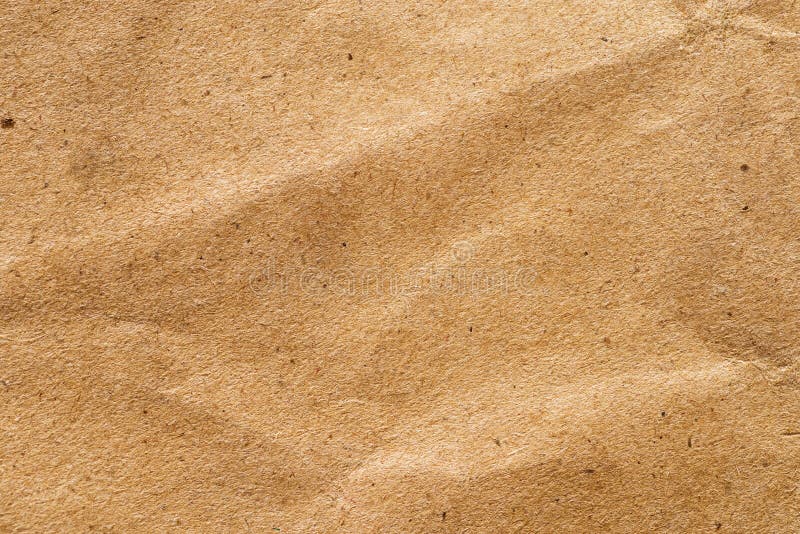
Best Paper Bag Texture A Deep Dive
Best paper bag texture? It’s more than just a surface; it’s a sensory experience that subtly shapes our perception of a product and the brand behind it. From the satisfying crinkle of kraft to the luxurious smoothness of coated paper, the texture of a paper bag speaks volumes. This post explores the fascinating world of paper bag textures, delving into their creation, feel, visual appeal, and impact on brand identity.
We’ll uncover the science behind why certain textures evoke specific emotions and how manufacturers achieve such diverse tactile and visual effects. Prepare to appreciate the often-overlooked artistry of the humble paper bag!
Defining “Best” Paper Bag Texture
Defining the “best” paper bag texture is surprisingly complex. It’s not a simple matter of objective measurement, but rather a deeply subjective experience shaped by individual preferences and the context of use. What one person considers the ideal tactile experience, another might find unpleasant. This subjectivity stems from the interplay of various sensory attributes and the emotional responses they trigger.The perception of paper bag texture is heavily influenced by several key sensory attributes.
Roughness and smoothness are fundamental aspects, with a spectrum ranging from the coarse feel of a recycled kraft paper bag to the almost silky smoothness of a high-quality coated bag. Softness is another important factor, affecting how comfortable the bag feels to the touch and how easily it can be crumpled or folded. These tactile sensations combine to create a unique overall texture profile.
The weight of the paper also plays a role; a heavier bag often feels more substantial and luxurious, while a lighter bag might feel flimsy or delicate.
Sensory Attributes and Emotional Responses
Different textures evoke distinct emotional responses in consumers. A rough, textured paper bag, for instance, might communicate a sense of rustic charm or natural authenticity, potentially appealing to environmentally conscious consumers. Such a texture might be associated with handmade products or artisanal goods, conveying a feeling of craftsmanship and unique character. Conversely, a smooth, soft paper bag can project an image of elegance, sophistication, and perhaps even luxury, aligning well with premium brands or high-end products.
The texture, therefore, acts as a silent communicator, influencing consumer perceptions of the product itself and the brand associated with it. Imagine the difference between a finely textured bag holding a bottle of expensive wine compared to a rough, recycled bag holding groceries – the textures themselves subtly shape our expectations and emotional response. A crisp, slightly stiff texture might convey strength and reliability, while a pliable, easily foldable texture could communicate flexibility and adaptability.
The choice of paper bag texture is therefore a crucial element in branding and product presentation.
Types of Paper Bag Textures
Paper bag texture plays a surprisingly significant role in the overall appeal and functionality of the bag. From the rough and rustic feel of kraft paper to the smooth elegance of coated paper, the texture contributes to both the aesthetic and the practical aspects of the bag, influencing its perceived quality, durability, and even its suitability for specific uses. Understanding the different types of paper bag textures is key to selecting the right bag for your needs.
The texture of a paper bag is determined by a combination of the type of paper used and the manufacturing processes employed. Different paper types have inherent textural qualities, while various finishing techniques can further enhance or modify the texture.
Paper Bag Texture Types and Manufacturing Processes
| Texture Type | Description | Associated Paper Type | Typical Use Case |
|---|---|---|---|
| Kraft | A naturally rough, strong, and unbleached texture with visible fibers. Often has a slightly coarse feel. | Kraft paper (unbleached, recycled, or virgin pulp) | Grocery bags, industrial packaging, shipping bags. Often preferred for its strength and eco-friendly nature. |
| Linen | A subtly textured surface that mimics the look and feel of linen fabric. It’s usually smoother than kraft but still has a noticeable texture. | Paper with a linen embossing finish. Often made from higher quality paper stock. | Retail bags, gift bags, boutique packaging. Projects a more upscale and sophisticated image. |
| Embossed | Features a raised design or pattern pressed into the paper’s surface, creating a three-dimensional texture. The design can range from subtle patterns to intricate images. | Various paper types, depending on the desired final effect and embossing technique. | Gift bags, specialty packaging, promotional bags. Adds a decorative element and a tactile experience. |
| Coated | Smooth, often glossy or matte finish created by applying a coating to the paper surface. This significantly reduces the paper’s inherent texture. | Various paper types; the coating material can vary (e.g., polyethylene, latex). | Food packaging (e.g., bakery bags), high-end retail bags, bags requiring a print-friendly surface. Provides a clean, professional look and often enhanced printability. |
The manufacturing processes behind these diverse textures involve a combination of paper selection and finishing techniques. Kraft paper’s texture is inherent to the pulping and papermaking process itself, while linen textures are created through embossing, a process that uses heated rollers with textured patterns to press the design into the paper. Embossing can be applied to various paper types to achieve different effects.
Coated papers undergo a coating process where a liquid coating is applied to the paper, dried, and often calendered (pressed) to achieve the desired smoothness and gloss.
Visual Representation of Textures
Understanding the visual aspects of paper bag textures is crucial for selecting the right bag for your needs. The visual texture significantly impacts the perceived quality, feel, and even the overall aesthetic appeal of the bag. This section will delve into the visual characteristics of three distinct paper bag textures, highlighting the differences in their surface appearance.
Kraft Paper Texture
Kraft paper, a staple in paper bag manufacturing, presents a characteristically rough and rustic appearance. The fiber structure is readily visible, with noticeable inconsistencies in color and texture across the surface. Instead of a uniform tone, you often see subtle variations in shade, ranging from light tan to deep brown. The lack of any significant sheen contributes to its matte, almost earthy feel.
The fibers themselves are relatively long and loosely woven, creating a slightly uneven surface that catches the light differently in various areas. This gives it a natural, unrefined look that many find appealing for its eco-friendly and vintage aesthetic.
Gloss-Coated Paper Texture
In stark contrast to kraft paper, gloss-coated paper bags exhibit a smooth, polished surface with a distinct sheen. The individual fibers are almost entirely invisible, resulting in a uniform and even appearance. The color is typically consistent and vibrant, with the gloss coating enhancing the saturation and depth of the print or color. The surface reflects light uniformly, creating a glossy finish that feels sleek and sophisticated to the touch.
This texture is often associated with higher-end products or brands aiming for a premium look and feel.
Recycled Paper Texture
Recycled paper bags offer a unique visual appeal, showcasing the inherent character of repurposed materials. The texture is typically more uneven than kraft paper, with visible flecks and variations in color and density. These flecks represent different fibers and inks from the original papers used in the recycling process, creating a heterogeneous, mottled effect. The surface may feel slightly rougher than kraft paper due to the presence of these recycled components.
The color is often a muted tone, varying from greyish-brown to a speckled mix of browns, whites, and other colors, reflecting the diverse origins of the fibers. The absence of a uniform color or sheen contributes to the recycled paper’s environmentally conscious and authentic aesthetic.
Tactile Experience of Textures: Best Paper Bag Texture

Source: dreamstime.com
The feel of a paper bag, often overlooked, plays a surprisingly significant role in shaping consumer perception and influencing purchasing decisions. A subtly rough texture can evoke feelings of rustic charm and natural authenticity, while a smooth, glossy finish might suggest luxury and sophistication. This tactile interaction is a crucial, often subconscious, element of the overall brand experience. Understanding how different textures translate into tangible sensations is key to effective packaging design.The tactile properties of a paper bag directly impact how consumers perceive the product inside.
A high-quality, thick paper bag, for instance, can communicate a sense of value and care, suggesting that the contents are equally premium. Conversely, a flimsy, thin bag might convey a sense of cheapness, regardless of the product’s actual quality. This unspoken communication through texture is powerful and often more impactful than visual cues alone.
Tactile Comparisons of Paper Bag Textures
Let’s examine the tactile experience of three distinct paper bag textures: Kraft, coated, and laminated. Kraft paper bags offer a characteristically rough, slightly uneven surface. Coated paper bags possess a smooth, often glossy finish, while laminated bags combine the smoothness of a coated bag with a more substantial, almost plastic-like feel. These differences in texture profoundly affect the consumer’s interaction with the bag and their perception of the product within.
Descriptive Adjectives for Paper Bag Textures
Understanding the vocabulary used to describe tactile sensations helps to pinpoint the desired feel for a specific product. Below is a list of adjectives that capture the diverse tactile experiences associated with different paper bag textures. These descriptive terms can be invaluable tools when communicating design specifications or evaluating existing options.
- Kraft: Rough, coarse, textured, rustic, natural, uneven, sturdy, matte.
- Coated: Smooth, glossy, slick, polished, slippery, soft, delicate, luxurious.
- Laminated: Smooth, stiff, sturdy, firm, durable, resistant, plastic-like, waterproof.
Influence of Texture on Functionality
Paper bag texture isn’t just about aesthetics; it significantly impacts the bag’s performance and overall usability. The feel of the paper directly correlates with its strength, its ability to hold different items, and even how well it accepts printing. Understanding these relationships is crucial for both manufacturers and consumers.Paper bag texture profoundly affects its strength and durability. A rougher, more textured surface often indicates a higher density of fibers, leading to increased tensile strength and resistance to tearing.
Finding the best paper bag texture is all about that tactile experience, right? The subtle crinkle, the satisfying strength… it’s almost as important as the perfect video thumbnail, which is why I’ve been brushing up on my YouTube game lately by reading this awesome guide on getting it on with YouTube. Knowing how to present my craft videos properly will help me show off those beautiful paper bag textures even better! Ultimately, the perfect bag texture enhances the overall aesthetic, much like good video editing does for YouTube content.
Conversely, smoother textures, while often more aesthetically pleasing, might compromise the bag’s ability to withstand heavy loads or rough handling. For example, a grocery bag made from a heavily textured kraft paper will likely be more durable than one made from a smooth, coated paper, better able to carry heavier items without ripping. The interlocking fibers in a rough texture create a more robust structure.
Texture and Item Containment
The texture of a paper bag directly influences its ability to securely hold various items. A textured surface can provide a better grip on items, preventing slippage and potential spills. For instance, a bag with a slightly embossed texture might be better suited for carrying groceries than a completely smooth bag, especially if the items are irregularly shaped or prone to rolling around.
Furthermore, a textured surface can also improve the bag’s ability to withstand the weight of its contents without deformation. A corrugated texture, for example, adds significant strength and rigidity, allowing the bag to carry heavier objects without collapsing.
Texture and Printability
The texture of the paper significantly impacts its printability and overall aesthetic appeal. Smooth paper surfaces provide a clean, crisp print, ideal for high-resolution images and detailed text. However, heavily textured surfaces can cause ink to absorb unevenly, resulting in a less defined print. This is why many companies choose smoother papers for bags with elaborate designs or branding.
Conversely, a subtle texture can enhance the visual appeal of a printed design by adding depth and character. A slightly textured paper might subtly highlight the colors and details of a logo, creating a more sophisticated and luxurious look.
Texture and Brand Perception

Source: rawpixel.com
Paper bag texture isn’t just about feel; it’s a powerful silent communicator, subtly shaping how consumers perceive your brand. The right texture can elevate a product’s perceived value, reinforce brand messaging, and even influence purchasing decisions. A well-chosen texture is a crucial element in creating a cohesive and memorable brand experience.The tactile qualities of a paper bag directly contribute to a brand’s overall aesthetic and communicate specific values.
A rough, textured bag might suggest a rustic, handcrafted feel, while a smooth, glossy bag conveys luxury and sophistication. This connection between texture and perception is often subconscious, yet highly impactful. Consumers react to textures on an emotional level, associating certain feels with particular experiences and brand identities.
Luxury Brand Aesthetics and Paper Bag Texture
High-end brands frequently utilize smooth, high-quality paper bags with a subtle sheen or embossing. Imagine a sleek, black paper bag with a lightly embossed logo, perhaps made from a heavy-weight, uncoated paper stock. This creates an air of exclusivity and sophistication, reflecting the brand’s commitment to quality and craftsmanship. The absence of excessive texture allows the focus to remain on the clean lines and high-quality materials, reinforcing the luxury image.
Conversely, a roughly textured, recycled paper bag would likely clash with this aesthetic.
Rustic Brand Aesthetics and Paper Bag Texture
In contrast, brands aiming for a rustic or eco-conscious image might opt for a more textured bag. Think of a kraft paper bag with a noticeable grain, perhaps featuring a slightly rough, unrefined texture. This can evoke feelings of authenticity, naturalness, and handcrafted quality. The visible fibers and uneven surface create a tactile experience that aligns perfectly with the brand’s commitment to sustainability and natural materials.
The use of recycled or unbleached kraft paper further enhances this perception.
Modern Brand Aesthetics and Paper Bag Texture
Modern brands often prioritize minimalism and clean lines. Their paper bags might feature a smooth, matte finish, possibly with a simple, geometric design subtly embossed or printed on the surface. The texture here is understated but crucial; it complements the overall aesthetic of simplicity and sophistication. The lack of excessive embellishment reflects the brand’s focus on functionality and clean design.
A heavily textured bag would likely detract from this minimalist aesthetic.
The Role of Texture in Enhancing Consumer Experience, Best paper bag texture
The paper bag’s texture plays a significant role in the overall unboxing experience. A pleasant tactile experience can elevate the perception of the product itself. A luxurious, smooth bag adds a touch of indulgence, while a rustic, textured bag enhances the feeling of authenticity and craftsmanship. This tactile element creates a lasting impression, reinforcing the brand’s message and strengthening the customer’s connection with the brand.
Even something as seemingly insignificant as the texture of a paper bag contributes to the holistic brand experience.
Final Wrap-Up
So, the next time you reach for a paper bag, take a moment to appreciate the nuanced textures that contribute to its overall appeal. From the rough-hewn charm of kraft to the sophisticated elegance of linen, the texture of a paper bag is a powerful design element that transcends its functional purpose. It’s a testament to the creativity and craftsmanship involved in even the simplest packaging, shaping our perception and enhancing the overall brand experience.
Understanding this allows for thoughtful design choices that resonate with consumers on a deeper level.
FAQ Explained
What are some eco-friendly paper bag textures?
Recycled kraft and unbleached paper are excellent eco-friendly choices, offering a natural, rustic texture.
How does texture affect the cost of a paper bag?
More complex textures (e.g., embossing, linen) generally increase production costs compared to simpler textures like plain kraft.
Can you print on all paper bag textures equally well?
No, highly textured surfaces can sometimes make printing more challenging. Smooth surfaces generally offer better print quality.
What’s the most durable paper bag texture?
Thicker, heavier paper stocks, often with a laminated or coated finish, tend to be the most durable.
